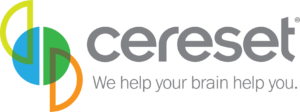


Our new online format combines the flexibility of on-demand learning with opportunities for real-time engagement. Earn up to 20 CECs!
Can’t make it to view a session? No problem. Each session will be added to the content library so you can watch at your convenience. Check back on this page as more sessions and details become available.
Session Schedule
| Title | Description | Learning Objectives | Presenter(s) |
| Beyond Motivation: The Real Work of Behavior Change in Fitness | Why does sustained behavior change remain one of the most persistent challenges in fitness and health coaching? This session takes behavior change theory off the page and into the gym, studio, and coaching session. While brief reminders of foundational theories will be covered, this session’s focus is on real-world application. Through case studies and client scenarios, participants will explore how evidence-based behavior change strategies can be adapted across different coaching contexts—whether in the depth of a one-on-one training session or the fast-paced dynamics of a group or studio setting. Attendees will leave with practical tools to navigate ambivalence, foster accountability, and help clients create lasting habits that support their fitness goals. | 1. Summarize key psychological and behavioral principles that drive long-term adherence and client success. 2. Identify common barriers to behavior change in fitness settings and apply practical communication strategies to overcome them. 3. Apply evidence-based frameworks to real-world client scenarios, starting tomorrow. | Rachele Pojednic, PhD, FACSM, Stanford University, Stanford, CA |
| Beyond the Clinic: Keeping Cardiac Rehab Participants Engaged and Active | Many patients successfully complete cardiac rehab, yet a gap often exists when transitioning into community or fitness settings, limiting long-term engagement and health benefits. This session examines the barriers in this referral pipeline and explores strategies for exercise professionals to become trusted partners in supporting clients beyond clinical care. Participants will learn what the evidence says about post-rehab exercise adherence, practical approaches for facilitating smooth transitions, and ways to strengthen collaborations with healthcare providers to improve client outcomes. | 1. Summarize current research on cardiac rehab outcomes, exercise adherence post-rehab, and the benefits of structured transitions into community-based fitness. 2. Apply strategies to engage clients leaving cardiac rehab in safe, effective, and motivating exercise programs within fitness settings. 3. Develop approaches for building trust and collaborative referral relationships with healthcare providers to support a seamless post-rehab exercise continuum. | Cemal Ozemek, PhD, FACSM, CEP, University of Illinois Chicago, Chicago, IL |
| Breaking Barriers: Why Women Aren’t Strength Training and How to Change That | If women only see ‘strong’ bodies lifting weights, how can they imagine their own strength taking shape – are we missing the mark? Despite strong evidence highlighting the health and performance benefits of resistance training, participation rates among women remain low. This session explores the scientific, social, and behavioral factors including social representation, identity fit, and self-efficacy that influence women’s engagement in strength-based exercise. Participants will learn evidence-based strategies to overcome barriers, create inclusive and empowering messaging, and translate the science into actionable approaches that increase confidence, accessibility, and participation. The session also highlights professional and business opportunities in supporting lifelong strength training for women of all shapes, sizes, and fitness levels. | 1. Describe how social representation, identity fit, and self-efficacy influence women’s engagement in resistance training. 2. Identify actionable strategies to create inclusive, empowering messages and exercise programs that encourage women to participate in strength-based movement. 3. Apply evidence-informed approaches to increase accessibility, engagement, and adherence for women across diverse backgrounds, while recognizing professional and business opportunities. | Antonella Schwarz, PhD, Barry University, Miami Shores, FL |
| Creating Community Engagement: Collaborating to Advance Physical Activity | Exercise professionals can play a powerful role in advancing community health—but meaningful engagement requires more than hosting classes. This session explores strategies for building trusting, collaborative relationships within local communities to promote physical activity, improve public health, and strengthen professional credibility. Participants will learn evidence-based approaches to community engagement, practical steps for fostering partnerships, and why integrating these initiatives benefits both clients and the broader population. | 1. Summarize research on the impact of community-based physical activity initiatives and collaborative approaches for improving population health. 2. Apply strategies to build partnerships and trust within local communities to enhance engagement, participation, and access to physical activity opportunities. 3. Develop actionable plans for implementing community-focused initiatives that support both client outcomes and broader public health goals. | Amy Bantham, DrPH, FACSM, Move To Live More, Somerville, MA |
| From Client to Crowd: Mastering the Art of Small and Large Group Coaching | How do you coach with confidence whether it’s one client, a small group, or a full class? This session explores the science and strategy behind effective group training and how these skills enhance both personal training and group exercise instruction. Participants will learn what makes small and large group dynamics unique, how to adapt coaching cues and motivation styles, and why versatility across these settings makes professionals more valuable and employable. Attendees will walk away with practical tools, communication strategies, and career resources to thrive in any training environment. | 1. Describe evidence-based principles of group dynamics, motivation, and communication that influence exercise adherence and performance in small and large group settings. 2. Apply strategies for effectively coaching and cueing individuals, small groups, and large classes while maintaining safety, engagement, and inclusivity. 3. Identify opportunities to leverage group training experience to enhance personal training skills, expand professional versatility, and increase career marketability. | Lauren Korzan, EP, GEI, Aquila, Atlanta, GA |
| Know Your Scope: Navigating Nutrition Advice Legally and Ethically | Can you say that? Nutrition guidance is an important part of supporting client health but professional boundaries are equally critical. This session helps exercise professionals understand what falls within their scope of practice when discussing nutrition and when it’s necessary to refer clients to a registered dietitian. Participants will explore the science behind evidence-informed nutrition education, learn strategies for ethically staying within scope, and discover how to develop strong referral networks that enhance client care and professional credibility. | 1. Describe evidence-based nutrition principles that fall within the exercise professional’s scope of practice and distinguish them from individualized nutrition care requiring a registered dietitian. 2. Recognize professional boundaries in nutrition guidance and apply strategies to remain within scope while supporting client health. 3. Build and maintain collaborative referral networks with registered dietitians to ensure clients receive comprehensive, evidence-informed nutrition support. | Nancy Rodriguez, PhD, RD, FACSM, University of Connecticut, Storrs, CT |
| Misnamed but Mighty: What Motivational Interviewing Really Does for Behavior Change | What if the secret to lasting client change isn’t motivation at all? Despite its name, Motivational Interviewing (MI) isn’t about giving pep talks—it’s about guiding meaningful conversations that uncover barriers, reduce fear, and foster self-directed change. This session takes a deeper dive into the science behind MI and its proven role in promoting behavior change. Through interactive case studies, participants will explore how to move beyond surface-level scripts and confidently apply MI strategies that create trust, autonomy, and real results. | 1. Summarize current research on the mechanisms and effectiveness of Motivational Interviewing in promoting exercise adherence and health behavior change. 2. Apply advanced MI techniques to address client ambivalence, fear, and barriers to change in real-world coaching scenarios. 3. Demonstrate how to integrate authentic, client-centered conversations that foster trust, accountability, and lasting behavior change. | Lilly Malardie, MPH, EP, NBH-HWC, Body Brain Alliance, Pittsburgh, PA |
| Movement Matters: How Exercise Professionals Can Influence Healthcare and Public Policy | How can exercise professionals move from the gym floor to the frontlines of healthcare and public health policy? Any why does this matter? Exercise professionals are uniquely positioned to drive change at the intersection of health, fitness, and policy. This session explores how our field can move beyond individual client outcomes to influence systems-level health improvement. Through current initiatives, attendees will learn about exercise and healthcare integration, how to contribute to public health strategies, and advocate for policies that recognize movement as essential to chronic disease prevention, management, and overall well-being. Discussion will highlight key topics including collaboration with the Centers for Medicare & Medicaid Services (CMS), engagement in state and national physical activity plans, and leadership opportunities across healthcare and community settings. | 1. Highlight progress and strategies for integrating exercise professionals into the healthcare system, including collaboration with CMS, creation of referral pathways, and partnerships with clinicians and payers to support chronic disease prevention and management. 2. Identify ways to contribute to public health and policy initiatives, such as engaging with physical activity plans, leading community-based programs, and addressing health disparities through movement-based interventions. 3. Understand how evidence-based frameworks and real-world examples impact policy including topics around fall prevention, women’s health advocacy, and use of wearable technology—to expand professional influence and align exercise promotion with current national health priorities. | Michael Stack, EP, Applied Fitness Solutions, Ann Arbor, MI |
| Preparing to Train Tactical Athletes: Best Practices for Fitness Professionals | Tactical athletes including military personnel, police officers, firefighters, and other public safety professionals have unique physical demands and training requirements. This session provides an overview of the science behind their performance needs and explores how fitness professionals can safely and effectively support these populations. Participants will gain practical strategies for assessing, programming, and progressing tactical athletes, as well as guidance on creating safe, evidence-informed training environments tailored to their specific occupational demands. | 1. Describe the physiological and performance demands of tactical athletes and the evidence-based principles guiding their training. 2. Apply assessment and programming strategies to safely and effectively train tactical athletes across different professions. 3. Develop practical approaches for integrating tactical athlete training into fitness settings, including client onboarding, progression, and safety considerations. | Nathan A. Edwards, PhD, The Ohio State University, Columbus, OH |
| Recovery and Adaptation: Evidence-Based Practices for Everyday and Athletic Fitness | What does current research really tell us about recovery—and how can we apply it effectively across different training goals? From cold exposure and compression to sleep and saunas, this session explores the physiological mechanisms that drive adaptation and performance across populations. Participants will learn how to critically evaluate emerging research, determine when and how to apply different recovery strategies, and translate evidence into practical, personalized approaches for clients ranging from everyday exercisers to competitive athletes. | 1. Compare the mechanisms and evidence supporting common recovery methods. 2. Apply evidence-based reasoning to select and prescribe recovery strategies tailored to client goals, training loads, and available resources. 3. Translate scientific insights into practical recovery programming that improves client readiness, adherence, and long-term results. | Rachelle A. Reed, PhD, EP, Therabody, Watkinsville, GA |
| Red Flags in Corrective Exercise for Movement Improvement: How to Progress, Regress and Refer Effectively | When does corrective exercise cross the line from enhancing movement to treating an injury? This session examines the science behind movement screening and corrective strategies, emphasizing how to recognize red flags that indicate the need for referral. Participants will explore the boundaries between performance enhancement and clinical care, learn how to safely progress or regress movement patterns, and gain strategies for building collaborative, trusting relationships with physical therapists to ensure clients receive the right care at the right time. | 1. Summarize the current evidence on corrective exercise, movement screening, and the distinction between exercise vs. clinical interventions. 2. Identify red flags such as pain, movement compensation, or functional limitations that signal the need for program modification or referral to a licensed healthcare provider. 3. Apply practical strategies to progress and regress corrective exercises safely while fostering professional collaboration and referral relationships with physical therapists. | Paul M. Gallo, EdD, FACSM, CEP, EP, GEI, Norwalk Community College, Hopewell Junction, NY Peter Ronai, FACSM, CEP, EP, Sacred Heart University, Milford, CT |
| Refuel to Rebuild: Protein, Carbs, and Hydration in Recovery | Recovery nutrition is often surrounded by hype but does the science support what’s trending on social media and in marketing? This session breaks down the evidence on protein, carbohydrates, and hydration for recovery, separating fact from fiction for both high-performance athletes and everyday exercisers. Participants will learn what truly matters for optimizing recovery, how to translate scientific findings into clear client guidance, and how to navigate misinformation with confidence and credibility. | 1. Evaluate current research on protein, carbohydrate, and hydration strategies for recovery and how these recommendations differ by training intensity and population. 2. Identify and debunk common myths about recovery nutrition circulating in social media and popular fitness culture. 3. Apply evidence-informed recovery strategies to develop realistic, individualized recommendations for clients ranging from recreational exercisers to competitive athletes within the exercise professional’s scope of practice. | Shawn M. Arent, PhD, University of South Carolina, Columbia, SC |
| The Behavior-Change Gap: Why Theory Isn’t Enough and What Actually Moves Clients | What do you do in the gap between what the behavioral theory predicts and what your clients actually do? What would coaching look like if you stopped prescribing and started responding? Fitness professionals often learn behavior change and motivational strategies through models, categories, and neatly packaged acronyms. But clients don’t show up in stages or color-coded diagrams, they show up with histories, hesitations, expectations, and behavioral realities that change session to session. This presentation flips the script. Instead of memorizing theory, we break down how to support the human in front of you: the micro-cues, the motivation shifts, the communication skills, and the practical strategies that turn science into action. This interactive session reframes traditional behavior-change models into practical, person-first strategies that exercise professionals can use immediately. Instead of teaching theories in isolation, this session will focus on actionable constructs or targets (self-efficacy, autonomy, affect, support, etc.) that directly influence long-term physical activity adherence. | 1. Differentiate between behavioral theories and realities by using key behavioral constructs (e.g., self-efficacy, self-regulation, autonomy, affect, support) to recognize how client motivation, readiness, and communication needs shift session-to-session. 2. Use person-first, client-centered strategies, including motivational interviewing and collaborative goal setting, to tailor real-time exercise prescription to individual needs, barriers, cultural contexts, health conditions, and lived experiences. 3. Develop practical, real-world intervention approaches that integrate constructs across multiple levels (individual, interpersonal, organizational, environmental) and prepare clients for challenges, setbacks, and relapse without compromising motivation or adherence. | Sara J. Kovacs, PhD, FACSM, Temple University, Philadelphia, PA |
| The Exercise Professional’s Role in Contemporary, Compassionate, Effective Obesity Care | Obesity care is evolving rapidly; are exercise professionals ready? This session explores the modern science of obesity as a chronic, relapsing disease characterized by metabolic and adipose tissue dysfunction, challenging long-held assumptions about willpower and weight control. Participants will gain insight into how exercise contributes to improved health outcomes alongside various treatment pathways including behavioral intervention, pharmacotherapy and metabolic/bariatric surgery. Within this framework, a focus will be understanding how compassion, communication, and continuing education are essential to delivering effective, stigma-free obesity care in the era of new obesity treatments. | 1. Explain the current scientific understanding of obesity as a disease, including mechanisms of metabolic dysfunction and implications for body weight regulation and exercise response. 2. Apply principles of compassionate, person-centered communication to support clients living with obesity in a respectful, evidence-informed manner. 3. Identify practical ways exercise professionals can collaborate within multidisciplinary obesity care teams and stay current through continuing education in this rapidly changing field. | Renee Rogers, PhD, FACSM, Kansas University Medical Center, Kansas City, KS |
2025 Event Partners
Thank you to our Sponsors














Thank you to our Workout Sponsors


